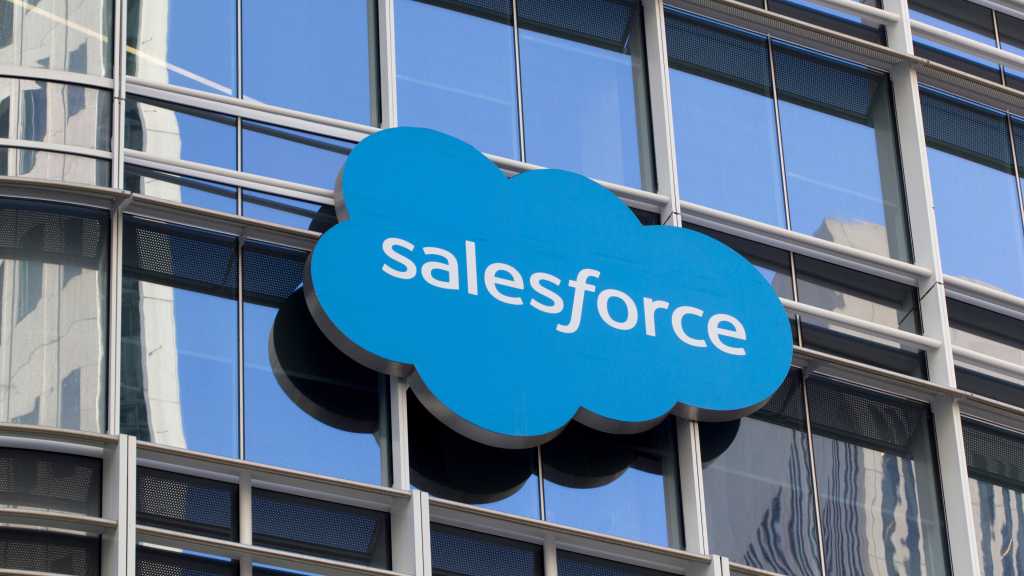The next release of Agentforce will provide a platform for building, deploying, and controlling agents to power the agentic enterprise, with Slack as the front end.

Salesforce has announced a new release of Agentforce that, it said, “gives teams the fastest path from AI prototypes to production-scale agents” — although with many of the new release’s features still to come, or yet to enter pilot phases or beta testing, some parts of that path will be much slower than others.
Agentforce 360 will be showcased at the company’s annual Dreamforce conference this week, and unites humans, agents, apps, and data, Salesforce president and chief engineering officer Srinivas Tallapragada said in a media briefing.
[ Related: News and insights from Dreamforce 2025 ]
Customers are not currently getting value from their AI investments, he said. “[They] are stuck in what I call ‘pilot purgatory’,” he said. “And this is what we’re trying to solve.”
The Agentforce 360 platform provides a new human-readable portable JSON language, Agent Script, that lets teams author complex agent behavior. It enables hybrid reasoning through the Atlas Reasoning Engine, which is now configurable, and now supports Google’s Gemini large language model in addition to LLMs from OpenAI and Anthropic.
Agent Script will enter beta testing in November 2025.
Agentforce 360 will also include Agentforce Voice, a voice interface that Salesforce said will deliver “ultra-realistic” personalized voice experiences. It is connected to Salesforce Voice, and conversations are transcribed live, so human agents can both monitor them from the Service Console, and instantly take over the interaction should the agent be unable to fulfill a request.
Agentforce Voice is fully integrated into existing call center systems, with native connections to NiCE, Genesys, Amazon Connect, Five9, and Vonage. It will be generally available on October 21, although without support for SIP, WebRTC or Digital Channels, which will not enter pilot testing until December.
A new version of the agent development tool Agentforce Builder will enter beta testing in November. Users can describe the agent they want to build in natural language, and Builder then creates the agent using Agent Script. A preview panel showing every reasoning step and revealing agent behavior lets the developer test and debug it in the same application. A shared metadata model ensures the agents are portable and readable and enables their export via APIs, Salesforce said.
A new capability, Agentforce Vibes, lets developers use an agent in Agentforce Builder or their IDE of choice to automate complex development tasks throughout the software lifecycle and DevOps pipeline.
Finally, Context Indexing will be powered by Data 360 and will extract and structure data or surface unstructured data for use in Agentforce. Salesforce expects to make this feature generally available later this month.
Brian Gannuscio, SVP at Salesforce consultancy Coastal, said that the biggest problem would-be users of any AI are facing is data readiness.
There is a misconception that you can just flip a switch with AI, which has led to discomfort and unhappiness with the results, he said. “There are two things that really create a foundation to be able to do AI correctly. One is data readiness: You have to have access to the data in order for AI to be able to make smart decisions. Even in our own customer base, we find that our customers just don’t have a really strong data strategy. The second piece is prompt engineering, a new skill set that is rapidly evolving.”
AI agents need to be treated like interns on their first day on the job and provided with a lot of information, he said. For example, “if somebody is authenticating in through AI, you have to tell the agent that [users] can’t bypass the authentication and verification, that once they’re authenticated, they can’t switch their authenticated methods.”
A new role for Slack
Slack is becoming the new front end for Salesforce, said Parker Harris, Salesforce co-founder and CTO of Slack.
“We’re reimagining all of Salesforce and Slack,” Harris said. “Imagine that you maybe don’t log into Salesforce, you don’t see Salesforce, but it’s there; it’s coming to you in Slack, because that’s where you’re getting your work done, and that you can unlock your personal productivity with that native AI and Slack.”
He said that Salesforce is working on creating an integration between Slack and Microsoft Teams, noting that there’s considerable overlap in usage. But, he said, “people aren’t really doing their work in a product like Teams. And when you think about Slack, that’s where we want you to get your work done.”
“We do want Slack to become an integral part of Salesforce, an integral part of Customer 360 and Agentforce 360, and we want to update our pricing and packaging,” he added. “We want to make it like part of the Salesforce experience, and we want to make that easy for our customers to consume. We don’t want to nickel and dime them and have them go, ‘oh, and I have to go purchase something else’. We just want it to be part of our offering, and you’ll see that in our evolution.”
Licensing complexity
Scott Bickley, advisory fellow at Info-Tech Research Group, was less enthusiastic. “To say I’m skeptical would be an understatement. The marketing branding, as admirable and creative as it is, continues to highlight the gaping chasm between promised functionality and real-world results,” he said. “The story on the street seems to be ringing more hollow. There is widespread concern that the licensing models are too complex, require multiple product layers, and are difficult to forecast ongoing spend, despite recent attempts by Salesforce to provide some level of transparency. Successful use cases that actually move the ROI or value creation needle are few and far between.”
He added, “Salesforce is driving home a compelling end state for their customer base: use Slack as your home base for where AI agents will reside, moving towards a single frame of reference for the end user. The goal is noble and does carry the promise of true productivity gains powered by AI enterprise search, merging of multiple AI agents, all striving to paint the customer 360 view, inclusive of the conversational data housed in Slack.”
However, he said, one huge obstacle is cost and license complexity. “It is clear that the killer app for AI is an LLM-powered genAI interface layer sitting atop robust machine learning and deep learning solutions that are statistically reliable,” he noted. “However, by making Slack the ‘conversational interface’ covering the generative AI layer, the price to play goes up significantly versus building your own generative AI layer.”
“It is unclear how the costs stack up incrementally,” he said. “I have core Salesforce cloud user subscriptions, Slack user subscription, Data Cloud consumption costs, Agentforce consumption costs, and now Agentforce (Sales, IT, HR, Tableau, Channel) as the cherry on top? This will be a difficult pill for Salesforce customers to swallow when they are pitched a Slack deal.”
With this uncertainty, he said, “adopting this complex solution [is] a high-risk proposition.”









